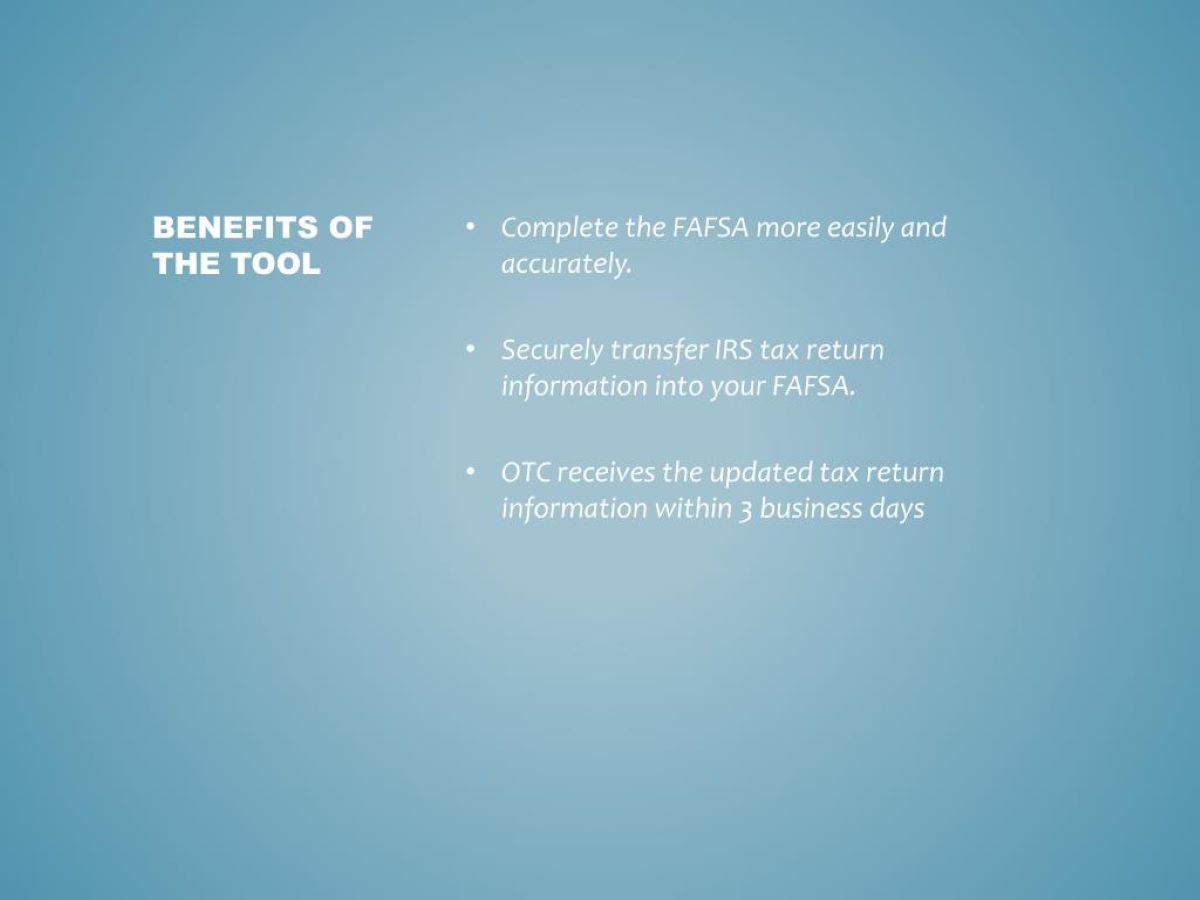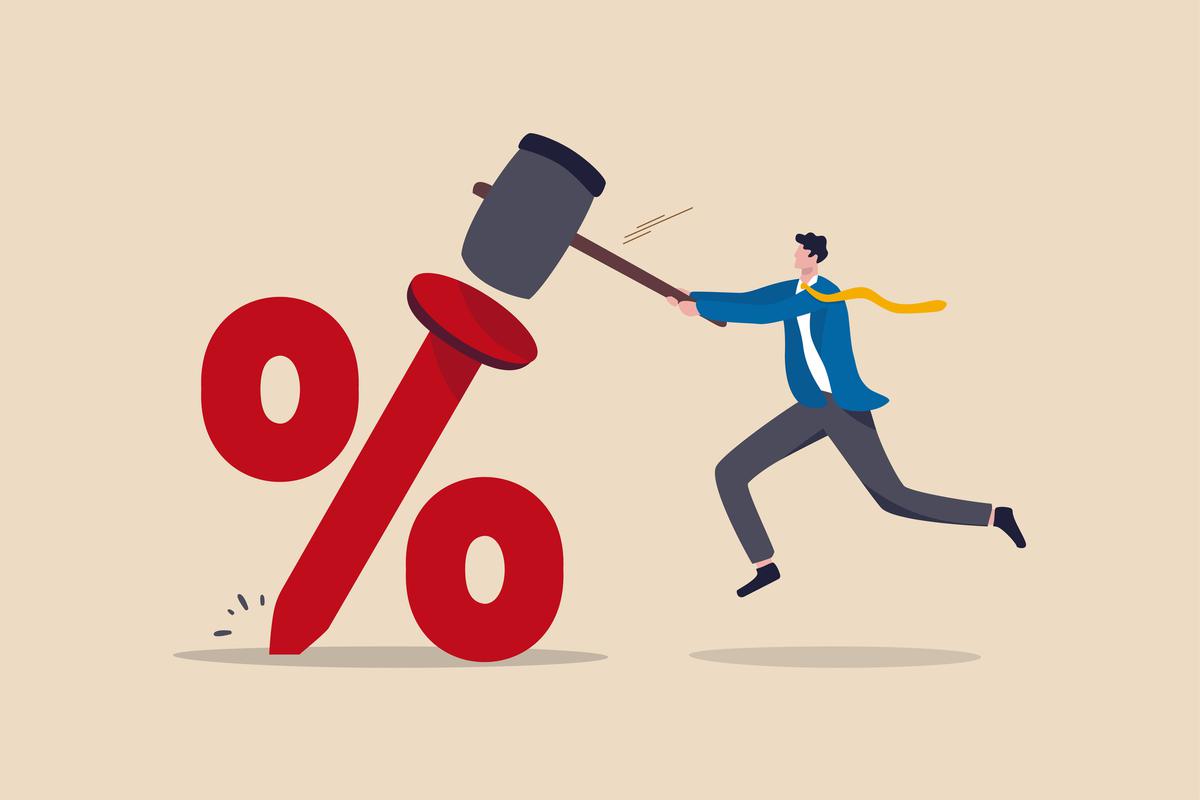

Finance
What Is Credit Underwriting
Published: January 14, 2024
Learn about credit underwriting in the world of finance and how it impacts lending decisions. Explore the key factors and processes involved in evaluating creditworthiness.
(Many of the links in this article redirect to a specific reviewed product. Your purchase of these products through affiliate links helps to generate commission for LiveWell, at no extra cost. Learn more)
Table of Contents
Introduction
Welcome to the world of credit underwriting! In the realm of finance, credit underwriting plays a pivotal role in shaping the lending landscape. Whether you’re applying for a personal loan, a mortgage, or a business line of credit, the outcome of your application often hinges on the decisions made by credit underwriters.
But what exactly is credit underwriting? In simple terms, it refers to the process of evaluating the creditworthiness of a borrower. It involves assessing the financial and personal information provided by the borrower, analyzing their credit history, and determining the level of risk associated with granting them access to credit.
Credit underwriting is not only essential for lenders who want to mitigate their risks, but it also ensures that borrowers are provided with suitable credit options that align with their financial capabilities. By utilizing a systematic approach, credit underwriters are able to make informed decisions that balance the needs of both the borrower and the lender.
In this article, we will explore the intricacies of credit underwriting, its significance in the financial landscape, and the factors that underwriters consider when evaluating credit applications. By gaining insight into the credit underwriting process, you will be better equipped to navigate the world of lending and understand the factors that influence credit decisions.
So, let’s dive into the world of credit underwriting and discover how it shapes the financial ecosystem.
Definition of Credit Underwriting
Credit underwriting is a crucial process in the lending industry that involves analyzing the financial information and creditworthiness of borrowers to assess the risk associated with granting credit. It is a systematic approach that lenders employ to evaluate the likelihood of a borrower repaying their debt obligations.
Through credit underwriting, lenders aim to determine whether a borrower has the ability to meet their financial obligations in a timely manner. This assessment helps lenders make informed decisions regarding the amount of credit to extend, the interest rate to charge, and the terms and conditions of the loan.
Credit underwriting involves a thorough evaluation of various factors, including the borrower’s credit history, income, employment stability, asset and liability profile, and overall financial health. The underwriting process enables lenders to mitigate risks by identifying potential red flags or warning signs that may indicate the borrower’s inability to repay the loan.
While credit underwriting is commonly associated with loan applications, it extends beyond that. It also applies to credit card applications, mortgage loans, business loans, and other forms of credit. Essentially, any situation where a lender assesses an individual or entity’s creditworthiness falls under the umbrella of credit underwriting.
It’s important to note that credit underwriting is not a one-size-fits-all approach. Lenders may have different underwriting criteria and guidelines based on their risk appetite and the specific type of credit being offered. Additionally, regulatory requirements and industry standards also play a role in shaping the credit underwriting process.
The ultimate goal of credit underwriting is to strike a balance between providing access to credit to deserving borrowers and mitigating the risk of default for the lender. By carefully evaluating the borrower’s financial situation and creditworthiness, credit underwriters help lenders make informed decisions that align with their risk tolerance and business objectives.
Now that we have a clear understanding of what credit underwriting entails, let us delve further into the role it plays in the lending process.
Role of Credit Underwriting
Credit underwriting plays a crucial role in the lending process by assessing the creditworthiness of borrowers and determining the level of risk associated with granting credit. It serves as a protective measure for lenders, helping them make informed decisions and mitigate potential financial losses.
One of the primary roles of credit underwriting is to ensure that lenders extend credit to borrowers who have the ability and willingness to repay their debt obligations. By carefully evaluating the borrower’s financial situation, credit history, and other relevant factors, underwriters are able to assess the borrower’s creditworthiness.
The credit underwriting process also helps lenders determine the appropriate terms and conditions for the loan. This includes factors such as the interest rate, repayment period, and any collateral requirements. By tailoring the loan terms to the borrower’s financial profile, lenders can optimize their risk exposure and increase the likelihood of repayment.
Moreover, credit underwriting plays a vital role in maintaining the overall stability and integrity of the financial system. By effectively evaluating the creditworthiness of borrowers, underwriters can prevent excessive lending to individuals or entities who may have a higher risk of default. This helps to prevent systemic risks and ensures the overall health of the lending industry.
In addition to assessing the borrower’s creditworthiness, credit underwriters also consider the lender’s risk appetite and guidelines when making credit decisions. This ensures that lending practices remain consistent and aligned with the lender’s objectives and risk tolerance.
Furthermore, the role of credit underwriting extends beyond the initial credit decision. Underwriters also monitor the borrower’s repayment behavior, financial performance, and any changes in their financial circumstances. This ongoing monitoring allows lenders to take appropriate actions, such as adjusting the credit terms or initiating collections, if necessary.
Overall, the role of credit underwriting is to strike a balance between providing access to credit to deserving borrowers and protecting the lender’s financial interests. It is a critical step in the lending process that helps ensure responsible lending practices and maintain the stability of the financial system.
Now that we understand the role of credit underwriting, let’s explore the credit underwriting process in more detail.
Credit Underwriting Process
The credit underwriting process is a systematic approach used by lenders to evaluate the creditworthiness of borrowers. It involves a series of steps that help lenders assess the risk associated with granting credit and make informed decisions about loan approval and terms.
While the specific steps may vary depending on the lender and the type of credit being considered, the general credit underwriting process typically includes the following stages:
- Application and Documentation: The process begins with the borrower submitting a credit application and providing relevant documentation. This includes personal information, financial statements, income verification, credit references, and any other requested documents.
- Initial Evaluation: After receiving the application, underwriters review the information provided to ensure completeness and accuracy. They assess the borrower’s eligibility based on factors such as credit score, income, assets, and debt-to-income ratio.
- Credit Analysis: Underwriters analyze the borrower’s credit history by reviewing their credit report and score. They look at factors such as payment history, outstanding debts, length of credit history, and any derogatory marks. This analysis helps determine the borrower’s creditworthiness and risk profile.
- Income and Employment Verification: Underwriters verify the borrower’s income and employment stability. This involves requesting employment verification letters, pay stubs, and tax returns to ensure the borrower has a stable source of income to meet their financial obligations.
- Asset and Liability Evaluation: Underwriters assess the borrower’s assets and liabilities to determine their financial strength. This includes analyzing bank statements, investment accounts, and any outstanding debts the borrower may have. The goal is to gain a comprehensive understanding of the borrower’s financial situation.
- Risk Assessment: After gathering all the necessary information, underwriters assess the level of risk associated with granting credit to the borrower. They consider factors such as the borrower’s credit history, income stability, debt-to-income ratio, and any potential mitigating factors.
- Decision Making: Based on the risk assessment, underwriters make a credit decision. They may approve the credit application, deny it, or request additional information and documentation from the borrower to further evaluate their creditworthiness.
- Terms and Conditions: If the credit application is approved, underwriters determine the appropriate terms and conditions for the loan. This includes the interest rate, repayment period, any collateral requirements, and other relevant details. The terms are designed to align with the borrower’s financial situation and mitigate the lender’s risk exposure.
The credit underwriting process aims to ensure responsible lending practices and protect both the borrower and the lender. It involves a thorough evaluation of the borrower’s financial profile and creditworthiness to make well-informed decisions regarding credit approval and terms.
Now that we have explored the credit underwriting process, let’s delve into the factors that underwriters consider when evaluating credit applications.
Factors Considered in Credit Underwriting
Credit underwriters take into account several key factors when evaluating credit applications. These factors provide valuable insights into the borrower’s financial health, creditworthiness, and ability to repay the loan. By carefully assessing these factors, underwriters can make informed decisions and determine the appropriate level of risk associated with granting credit. Here are some of the crucial factors considered in credit underwriting:
- Credit History: Underwriters analyze the borrower’s credit history, including their payment history, outstanding debts, and any derogatory remarks such as late payments or defaults. A strong credit history with timely payments and a low debt utilization ratio indicates a lower risk borrower.
- Income and Employment Stability: The borrower’s income and employment stability are crucial factors in determining their ability to repay the loan. Steady employment with a dependable income source increases the borrower’s creditworthiness and reduces the risk of default.
- Debt-to-Income Ratio: Underwriters calculate the borrower’s debt-to-income ratio, which compares their total monthly debt payments (such as mortgage, car loan, and credit card payments) to their monthly income. A lower debt-to-income ratio signifies the borrower’s capacity to handle additional credit.
- Assets and Collateral: The presence of assets and collateral can provide added security for the lender. Underwriters assess the borrower’s assets, such as savings, investments, or real estate, and evaluate the collateral pledged for the loan. These assets act as a safety net in case of loan default.
- Loan Purpose: The purpose of the loan is also considered. Underwriters evaluate whether the loan is for a productive purpose, such as financing a business expansion or purchasing a home, as these factors can influence the borrower’s commitment to repayment.
- Financial Reserves: Underwriters assess the borrower’s financial reserves, such as savings or emergency funds. Adequate reserves indicate the borrower’s ability to handle unexpected expenses and increase their likelihood of repaying the loan.
- Other Financial Obligations: Underwriters consider the borrower’s existing financial obligations, including other loans, credit card payments, and obligations such as child support or alimony. These obligations can impact the borrower’s ability to handle additional debt.
- Public Records and Legal Issues: Underwriters review public records for any bankruptcies, tax liens, judgments, or legal issues that may affect the borrower’s creditworthiness and ability to repay the loan.
- Industry-Specific Factors: In certain cases, underwriters may consider industry-specific factors. For example, when granting business loans, lenders may assess the financial health of the industry in which the borrower operates, as well as their business plan and market conditions.
These factors provide a comprehensive overview of the borrower’s financial situation, creditworthiness, and capacity to handle credit. By evaluating these factors alongside the lender’s risk appetite and guidelines, underwriters can make well-informed decisions and determine the terms and conditions of the credit being offered.
Now that we have explored the factors considered in credit underwriting, let’s delve into the importance of credit underwriting in the lending process.
Importance of Credit Underwriting
Credit underwriting plays a vital role in the lending process, serving as a critical safeguard for both lenders and borrowers. Here are some key reasons why credit underwriting is of utmost importance:
- Risk Mitigation: Credit underwriting allows lenders to assess the level of risk associated with granting credit to borrowers. By evaluating factors such as credit history, income stability, and debt-to-income ratio, underwriters can identify potential red flags and determine the borrower’s creditworthiness. This helps mitigate the risk of default and financial losses for the lender.
- Responsible Lending: Through credit underwriting, lenders ensure responsible lending practices. By carefully assessing a borrower’s financial health and capacity to repay, lenders can offer credit options that align with the borrower’s financial capabilities. This helps avoid overburdening borrowers with excessive debt and promotes sustainable borrowing habits.
- Fairness and Equal Opportunities: Credit underwriting ensures fairness in the lending process. It provides a standardized evaluation method, allowing lenders to assess all applicants consistently and impartially. This prevents discrimination and ensures that borrowers are evaluated based on their financial circumstances rather than any subjective biases.
- Protection for Borrowers: Credit underwriting protects borrowers from entering into loans they cannot afford. By evaluating the borrower’s financial situation, underwriters ensure that the loan terms are appropriate and align with the borrower’s repayment capacity. This helps prevent borrowers from taking on debt they may struggle to repay, reducing the risk of financial distress.
- Stability of the Financial System: Sound credit underwriting practices contribute to the stability of the financial system as a whole. By evaluating the creditworthiness of borrowers, lenders can minimize the risk of default and ensure the integrity of the lending industry. This helps maintain the overall health and stability of the financial system.
- Efficient Allocation of Resources: Credit underwriting enables lenders to allocate their resources efficiently by identifying creditworthy borrowers. By evaluating the borrower’s financial strength and creditworthiness, underwriters ensure that the right borrowers receive access to credit, optimizing the allocation of funds and helping lenders achieve their business objectives.
- Regulatory Compliance: Credit underwriting ensures that lenders comply with regulatory requirements and industry standards. It helps ensure that lending practices are in accordance with laws and regulations governing the financial industry, promoting transparency and protecting the best interests of both lenders and borrowers.
Overall, credit underwriting is essential for responsible lending, risk management, and maintaining the stability of the financial system. By carefully evaluating the creditworthiness of borrowers, underwriters promote fairness, protect borrowers from financial hardships, and enable lenders to make informed decisions about extending credit.
Now, let’s explore the potential risks associated with credit underwriting.
Risks Associated with Credit Underwriting
Credit underwriting is a crucial process in the lending industry, but it is not without its risks. Understanding these risks is important for both lenders and borrowers. Here are some of the key risks associated with credit underwriting:
- Default Risk: One of the primary risks lenders face is the potential for borrowers to default on their loan obligations. Despite the thorough evaluation conducted during credit underwriting, there is always a chance that unforeseen circumstances may impact a borrower’s ability to repay the loan. This risk can result in financial losses for lenders.
- False Information: Borrowers may provide false or inaccurate information during the credit underwriting process. This can make it challenging for underwriters to assess the true creditworthiness of the borrower. Lenders must implement robust verification processes to mitigate the risk of relying on fraudulent or misleading information.
- Changing Economic Conditions: Credit underwriting decisions are often made based on the borrower’s current financial situation. However, economic conditions can change, affecting the borrower’s ability to repay the loan. Economic downturns, job losses, or changes in interest rates can all impact a borrower’s financial stability and increase the risk of default.
- Regulatory and Compliance Risks: Lenders must adhere to various regulatory requirements and industry standards when conducting credit underwriting. Failure to comply with these regulations can lead to legal issues, fines, and reputational damage. Staying updated with relevant regulations and maintaining robust compliance processes is vital to mitigate these risks.
- Bias and Discrimination: Despite efforts to ensure fairness, there is a risk of bias and discrimination in the credit underwriting process. Underwriters must be diligent in evaluating applications objectively and avoiding any discriminatory practices based on factors such as race, gender, or ethnicity. Implementing transparent guidelines and regular training can help mitigate this risk.
- Overly Lenient or Strict Underwriting Standards: Striking the right balance in underwriting standards is crucial. If underwriting standards are too lenient, lenders can expose themselves to a higher risk of defaults. Conversely, if underwriting standards are overly strict, lenders may miss out on creditworthy borrowers who could have repaid their loans successfully. Regular reviews and adjustments to underwriting criteria are necessary to manage this risk.
While these risks exist, they can be managed through robust risk management practices, adherence to regulations, and regular monitoring and evaluation of credit underwriting processes. Balancing risk and reward is essential for lenders to make informed decisions and ensure the stability and viability of their lending operations.
Now, let’s wrap up our discussion on credit underwriting.
Conclusion
Credit underwriting is an integral part of the lending process, serving as a crucial mechanism for evaluating the creditworthiness of borrowers and mitigating the risks associated with granting credit. By considering factors such as credit history, income stability, and debt-to-income ratio, underwriters assess the borrower’s ability to repay their debt obligations.
The role of credit underwriting extends beyond risk management. It ensures responsible lending practices, protects borrowers from excessive debt burdens, and promotes fairness and equal opportunities in the lending industry. By evaluating financial health, employment stability, and other relevant factors, underwriters determine loan terms that align with the borrower’s financial capabilities.
While credit underwriting offers numerous benefits, it is not without risks. Lenders need to be mindful of default risks, false information provided by borrowers, changing economic conditions, and regulatory compliance. Additionally, the underwriting process should be free from bias and discrimination to ensure fair treatment for all applicants.
To mitigate these risks, lenders must adopt robust risk management practices, stay abreast of regulatory requirements, and regularly review and adjust underwriting criteria to strike the right balance between risk and reward.
Overall, credit underwriting plays a vital role in maintaining the stability and integrity of the lending industry. By effectively evaluating borrowers’ creditworthiness, underwriters promote responsible borrowing habits, protect both lenders and borrowers, and contribute to the efficient allocation of resources in the financial system.
Whether you are a borrower applying for credit or a lender assessing creditworthiness, understanding the credit underwriting process and its significance can empower you to make informed decisions and navigate the lending landscape with confidence.
So, embrace the knowledge of credit underwriting and make well-informed financial choices that lead to a stable and prosperous future.














